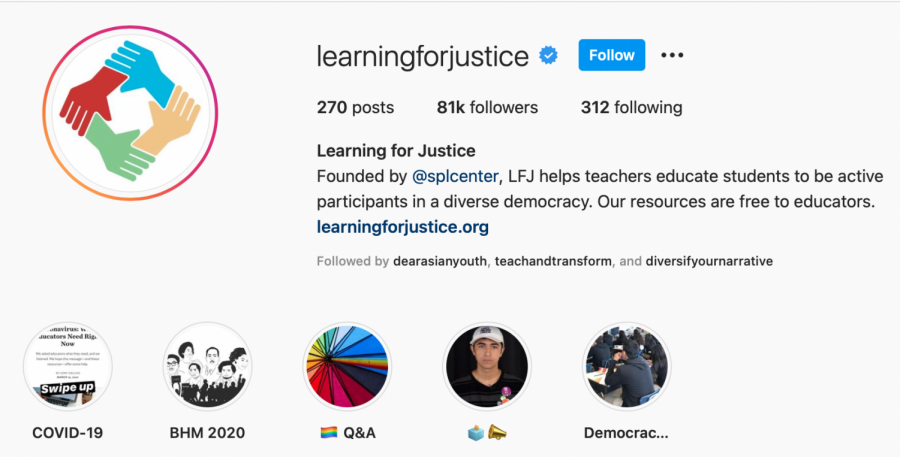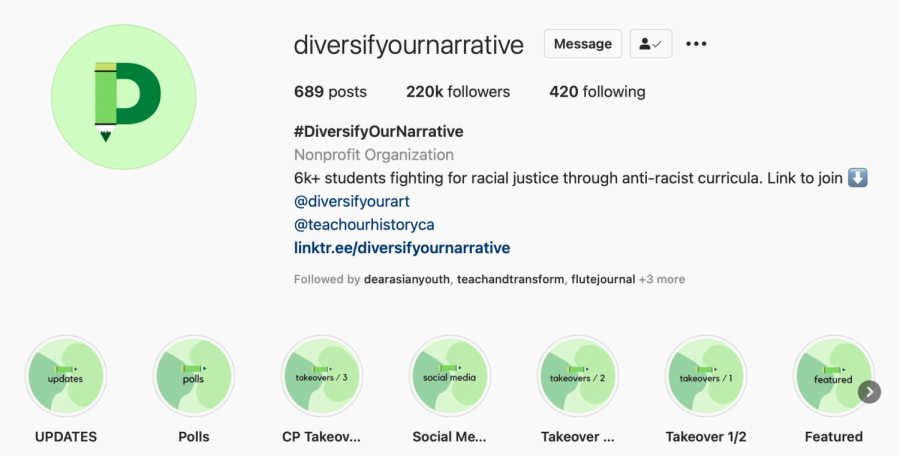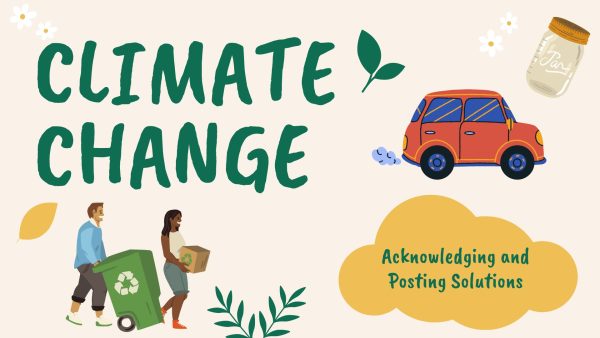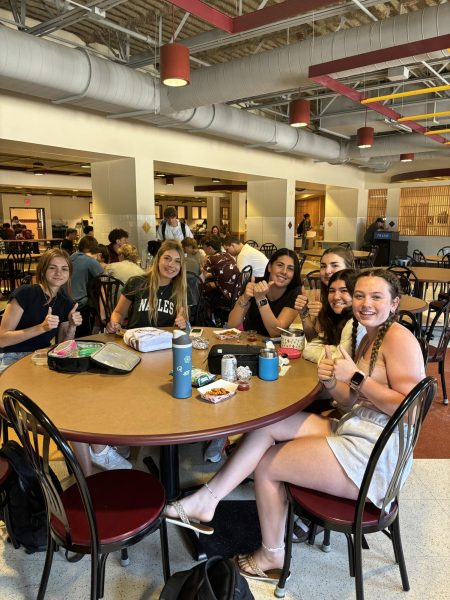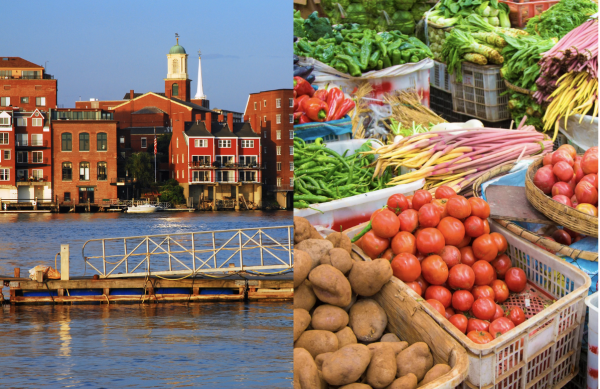Trending: #MoreThanAHashtag
Last June, did you change your profile picture to a raised black fist or add #BlackLivesMatter to your bio? Did you post a black square to your Instagram feed with the hashtag #blackouttuesday and no other information? Did you congratulate yourself for being “woke”? Spoiler alert: you’re not.
Racial awareness is larger than a hashtag. It is a much broader topic than social media, and it deserves the public’s full attention. Institutional racism is one of the most important topics in our country, and we have the responsibility to educate ourselves, especially as a predominantly white community.
Systemic racism is racism that is innate to society and is often reflected in that society’s laws and traditions. Not only does this place people of color at a distinct disadvantage from birth, but it is also much more difficult for the country to overcome than individual racism. Systematic racism in favor of white people has existed in the Americas since Columbus’s arrival. It was severely escalated by race-based institutionalized slavery in the United States, and between segregation, the second World War, and immigration policies, it has been perpetuated. The most diverse cities in the country tend to be separated into neighborhoods by race. There are significant wage gaps between different races and ethnic groups. Many parents teach their children to avoid black men in hoodies or with dreadlocks or braids. We are taught that racism is bad, yet we are also trained to racially profile people. For so many of us, this is completely unconscious. The surge of the Black Lives Matter movement last June was intended to bring the issues to light, and they did — but not nearly enough.
Calling attention to the murders of innocent black people such as Breonna Taylor has also revealed the flaws inherent in our laws surrounding police gun use. However, many people’s response has been “defund the police.” Taking away police resources will not solve the problem. It could actually amplify it, because the funds should be reallocated to expand their training and education. Police should be taking classes on racial bias and racial profiling. Lawyers, lawmakers, police, and educators should be working together to draft new laws to protect the police when they are forced to use violence to defend themselves while also holding the police accountable for their actions.
More importantly, police violence is not the primary issue at hand. It is simply the manifestation of a deep-rooted problem in American society. I am not excusing the police in any way, but it is important to address the root of the cause rather than the fruit.
The most recent American racism-related social media trend is #StopAsianHate. This “movement” rose to prominence following the Atlanta shooting in March. For the first time, stories about racism and discrimination against Asian Americans circulated on social media. Asian American influencers gained a much wider audience. I wish this was a positive direction. It could have been one, but it was not.
There was a tremendously strong reaction to the Stop Asian Hate movement. Once more, people were reposting influencers’ posts in their stories or changing their profile pictures to “Stop AAPI Hate” on a yellow background. At the same time, though, hundreds of people took to commenting on Asian American influencers’ posts about the difference in racism against Asian Americans and African Americans. They commented things like “You don’t know what it’s like to be black,” “Your ancestors were never enslaved,” and “Asian people don’t know what racism is really like” (paraphrased). Similarly, many white people also falsely believed that racism against Asian people in the United States is a “new” concept. It is not.
Racism against Asian Americans began as soon as Asian people began immigrating to the United States. Laws were written preventing Asians from immigrating to the US, but European immigrants were still allowed to enter the country. Such racism was amplified during World War II, especially against people of Japanese descent. Many Japanese Americans were forced into internment camps during the war, even those whose parents or even grandparents were born in the States. The bombing of Pearl Harbor led to a deep mistrust of Asian Americans. Furthermore, the model minority myth, which painted Asian Americans as hardworking yet submissive, deepened the divide between AAPI people and other people of color (especially African Americans). In modern culture, the fetishization of AAPI women specifically has been extremely harmful. Not only does this view degrade and objectify AAPI women generally, but it also leads to harmful stereotypes and negative views on women who are sex workers.
I am taking the time to summarize the racism and oppression of AAPI people in the United States that I did not take to summarize that of black people in the United States. Why? Because we are all familiar with the institution of slavery in this country. We all learned about the Civil War and emancipation. We studied segregation and Jim Crow laws, the Civil Rights movement, and MLK. Our social studies classes tend to brush over Asian Americans. Because we are written as submissive. Because we were never enslaved in the same way people of African descent were. But that is harmful. That deepens the racial divides in our country. I’ve studied American history almost every year of my primary and secondary education. In all that time, we rarely mention the laws restricting immigration — and when we do, they are just that: mentions. I do not distinctly remember discussing Japanese internment camps during World War II, because we focused on the Holocaust and Jewish concentration camps. Yes, the Holocaust is important to study, but it is not more important than the rest of the war. To truly study history, we must examine all sides of it. I’m taking the time here to summarize the history of racism against AAPI people in the US because our teachers and our society do not.
When I was in first grade, my teacher held up two sheets of paper: one white and one black. She used them to introduce the Civil Rights movement. When my best friend at the time mentioned me in relation to racial segregation, my teacher said I would not have counted as a black person. Then, she said I would not have counted as a white person. Never once did she even attempt to explain what my place would have been. My skin wasn’t light enough, and it wasn’t dark enough. When I was in second grade, my classmates tugged on the corners of their eyes, making jokes about Japanese and Chinese eyes. They thought it was hilarious. I found it offensive. My teacher never intervened. She never explained that what they were doing was racist. When we were coloring, my classmates referred to the apricot crayon as “skin color”, but that crayon was too light for me. I was stuck with brown, the color the rest of my classmates used for dirt. Did that make my skin the color of dirt? By the time I was ten, I thought a girl could only be pretty if she was blonde-haired and blue-eyed. I thought I would never be pretty because of the colors of my hair and eyes. Being transracially adopted, I have also been asked by dozens of people who my “real” parents are. Do you know how difficult of a question that is for a child to answer? My adoptive parents are my real parents. My biological parents are a separate story — and truly none of your business.
My parents have shared other incidents too. The most striking, though, is when a boy my age (we were around five at the time) told me I needed a bath because my skin was dirty. He meant nothing harmful by it. He just hadn’t known any better because no one had taught him.
I’m only seventeen, yet I have experienced dozens of incidents of racism, discrimination, or unintentional racism caused by ignorance. The Asian American community as a whole has suffered so much more. From March 19-25, 2020, the California-based organization Stop AAPI Hate received 673 reports of racism or racial discrimination. This was the organization’s first week of operation, meaning they had very little publicity, yet they still received up to 100 reports per day. Why was this organization formed? Why was it launched in mid-March? How did they have such a strong response after week one? The answer is simple.
Coronavirus.
What’s the first thing that springs to mind from that word? Lockdown. Social distancing. China. Masks. Virtual. Remote. Zoom. CDC. Fauci. Politics. Republicans. Vaccines.
What doesn’t spring to mind? Racism.
By now, I’m sure everyone has heard the terms “China virus” and “kung flu” being thrown around. It was probably in reaction to the former president’s use of the terms. But Trump is not the only person who I’ve heard use those terms. He’s certainly not the first. I’ve heard people in our community using those terms. I’ve even heard students at my high school use those terms. AAPI people have experienced other forms of discrimination as well. Many Asian Americans have experienced disgusted looks in stores and parents pulling their children close in the grocery line. One man reports having been looked at with suspicion for wearing a face mask, yet the next day another person judged him for not wearing one. One man told my mother, in front of me, that he hoped the government would “go after the Chinese”.
COVID-19 bred a new era of racism. From March 19, 2020 to February 28, 2021, Stop AAPI Hate received 3,795 reports. In March 2021, their total number of reports nearly doubled to 6,603 (almost 3,000 new reports in less than one month). These numbers may seem low, but the exponential increase in March 2021 tells us the real story: Asian Americans and Pacific Islanders are afraid of speaking up. The increase in March was a response to the #StopAsianHate movement on social media. For the first time, many of us felt visible enough to speak up. And for the first time, many of us learned that there was someone who would listen. Still, so many AAPI people (myself included) have been trained from a young age to believe that racism against us doesn’t matter. That it’s no big deal. Stop AAPI Hate is finally encouraging us to speak out.
Unfortunately, Stop AAPI Hate’s reports can be easily manipulated because a majority of reports were of verbal harassment or shunning. Some people have tried to downplay the trauma AAPI people have survived in the past year by pointing out there were not many physical attacks. That is uninformed. Although the percentage of physical attacks seems low, the severity of the crimes is high. The BBC posted an article detailing some recent attacks against Asian people that have gone unnoticed. They include attacks against elderly people that resulted in death. The only incident that I have seen circulating on social media (disclaimer: I do not have a Tik Tok account, so I may not be aware of other “viral” attacks) is one against an elderly woman in March 2021. The only reason this video went viral is that she managed to beat up her attacker with her stick — the video was circulated for its absurdity and hilarity, not to shed light on the issue.
COVID-related racism did not start after the shooting in Atlanta. It did not start when people started posing about it on Tik Tok. These incidents have been occurring for over a year, but people are only starting to pay attention now. And as soon as #StopAsianHate started trending, it was quickly shut down by Derek Chauvin’s trial and the situation in Palestine and Israel. Again, these topics are important. But discussion about one issue should never shut down discussion about another.
Ending systemic racism starts with us. Don’t just post #BlackLivesMatter or #StopAsianHate in your bio. Don’t forget about BLM and Stop Asian Hate as soon as the next big tagline comes along. Take the time to find influencers and educators on these topics. Take the time to read about the history of racism against all people of color in the United States, not just black people. Take the time to read about people’s personal stories and relate them back to the history you’ve learned. Call people out if you hear them being unintentionally racist or racially unaware.
It matters that we live in white, white New Hampshire. It does not excuse us from our responsibility to educate ourselves on these topics. In fact, it makes it even more important because although systemic racism was started by fear and hatred, it is perpetuated by ignorance. Pretending New Hampshire is separated from the problem — whether it’s because New Hampshire is predominantly white or because we still maintain a north-south bias from the Civil War — fuels racial ignorance, which fuels institutional racism. We need to educate ourselves. No matter how many times social media yells “black lives matter” or “stop Asian hate” at us, we need to open our hearts and minds to truly change our own unconscious bias and, in time, society will change with us.
Yes, I am Asian. Yes, I am Chinese. Does this make me biased? Probably. But if you truly care about ending system racism, then listening to an Asian voice, especially a female Asian voice, is a good place to start.


